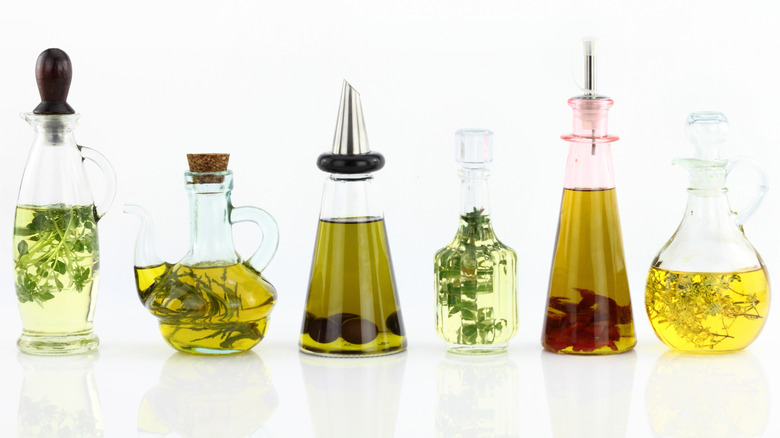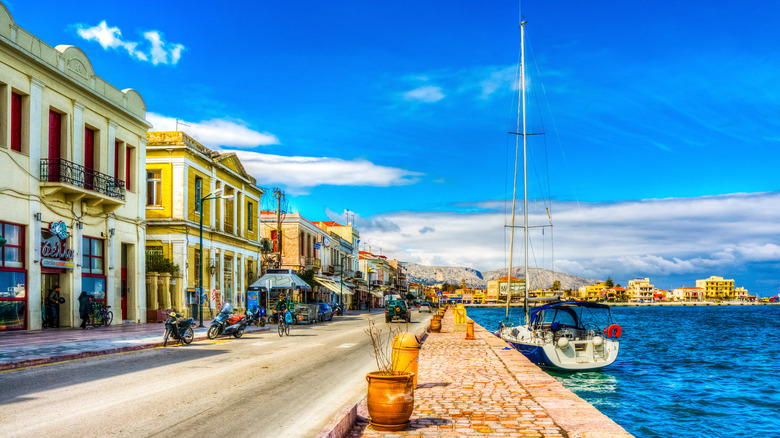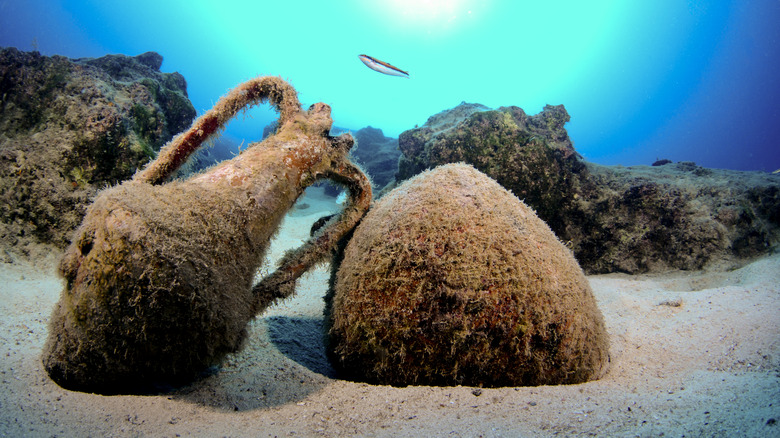The Shipwreck Salad Dressing Discovered 2,000 Years Later
Folks have been putting salad dressing on their greens for a long time. As noted by the Association for Dressings & Sauces, Babylonians were putting oil and vinegar on their salads almost two millennia ago. Egyptians did the same with an Asian-spice twist. Those civilizations weren't alone. In the 2000s, per Oceanus, scientists discovered yet another ancient example of this type of sauce.
Salad dressings are as numerous as they are old. The Washington Post notes, "There are perhaps hundreds of thousands of recipes for salad dressings." But in the end, they all boil down to different combinations of acid, fat, and salt. Specific ingredients can vary, but The Washington Post ultimately groups dressings into a few categories: vinaigrettes, which are acidic and oily, and creamy dressings, which are fatty and thick. Then there's a miscellaneous category, with fruits, jams, nuts, seeds, or veggies added to the mix. The ancient example found near the Greek island of Chios featured oil and oregano.
The history of Chios and its exports
Time for some historical context! Chios, known today as Khíos (via Encyclopedia Britannica), is a large island located in the Aegean Sea with a secure little harbor at its eastern side. On the Livius website, Dutch historian Jona Lendering explains that the island's position just off the Asian coast made it a prosperous trade hub. As such, Chios has long been economically intertwined with several ancient societies, dating back to the end of the stone age.
Thousands of years ago, Chios' food industry boomed. Inhabitants produced wine and mastic, which is taken from a shrub and used to make chewing gum, liqueur, and white jam. Produce such as figs, lemons, olives, oranges, and tangerines also grow abundantly on Chios (via Encyclopedia Britannica). In particular, its wine was beloved in the Greek and Roman eras. Chios relics called amphora (decorated jars) have been uncovered all over the Mediterranean region, all the way from Egypt to France. But wine wasn't the only thing amphoras held (via Livius).
A scientific discovery led to answers
Archaeologists often find clues about ancient cuisines at the bottom of the sea. For example, a Roman shipwreck full of fish sauce was recently rediscovered. Researchers also uncovered a 2,400-year-old shipwreck a half-mile off the shore of Chios, per Live Science. It dates back to the age of the Athenian Empire and the Roman Republic. Robots retrieved two amphoras from the wreck, then DNA samples were collected to determine what the cargo held. While such earthenware jars could have contained wine, Greek and Roman amphoras were also known to store anything from grains and fruits to nuts and spices.
In this case, it was determined one jar held olive oil and oregano mixed together as a sort of proto-Italian salad dressing. Oregano can preserve salad dressing longer (although not for two millennia), so only remnants of this sauce remain. Still, that was quite the find since sunken foodstuffs are often washed away by water. The other jar held traces of mastic, which was also used to preserve wine. While Chios has long been known for its wine, it turns out their ancient salad dressing may have been just as famous!


